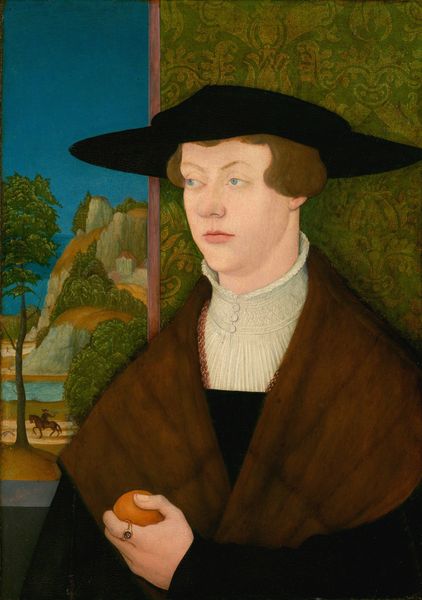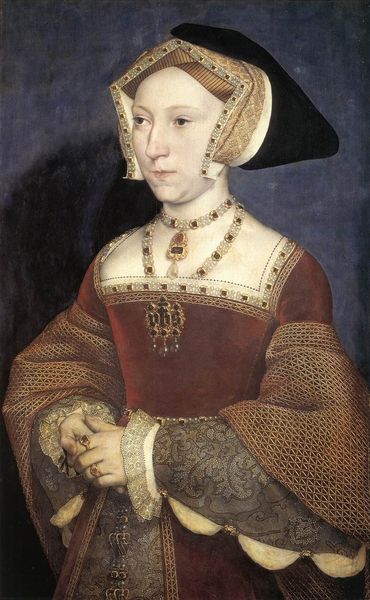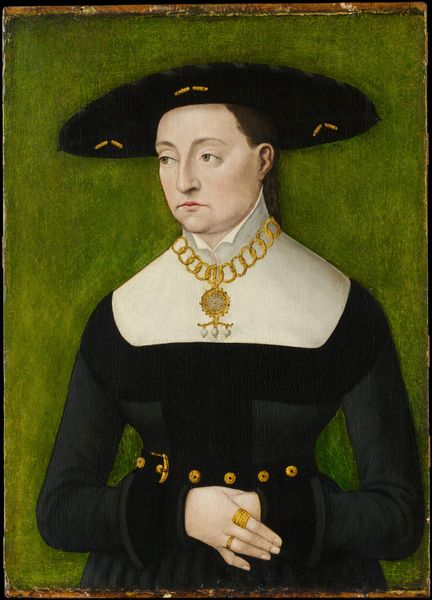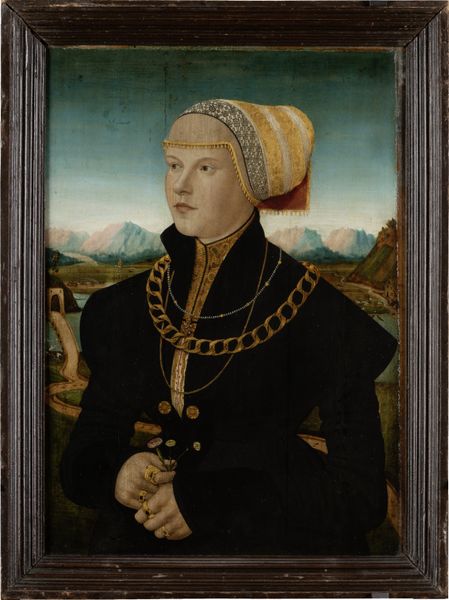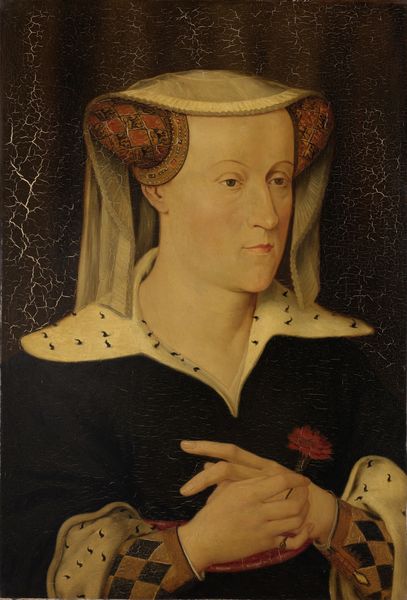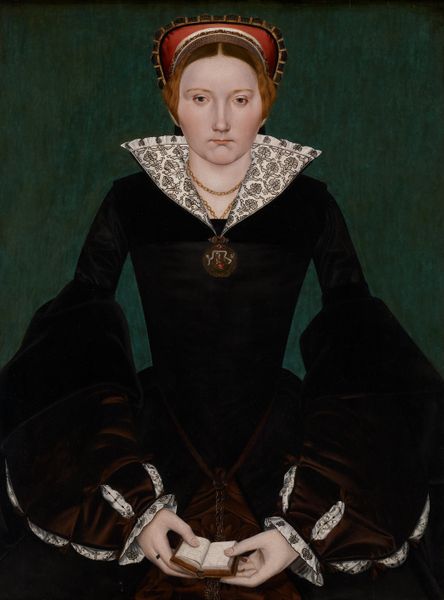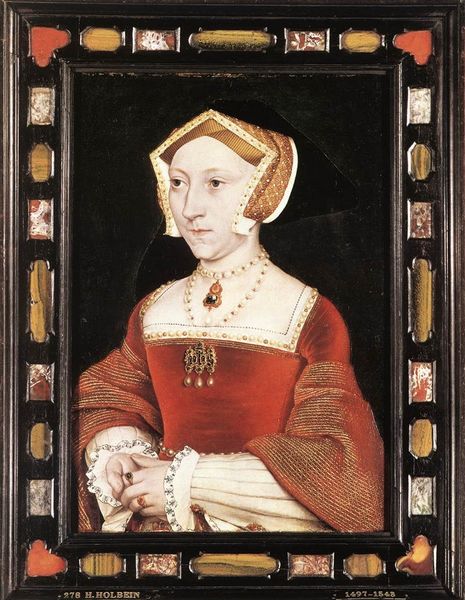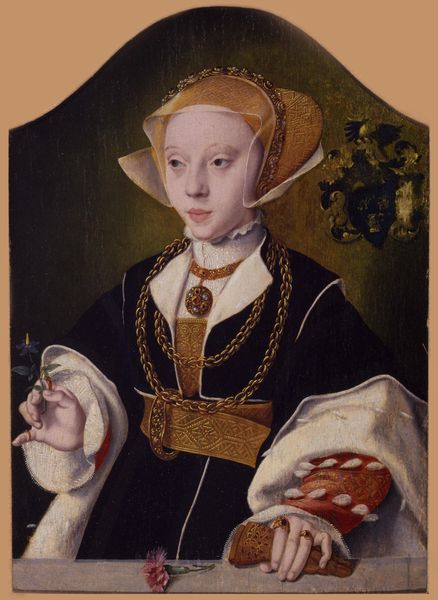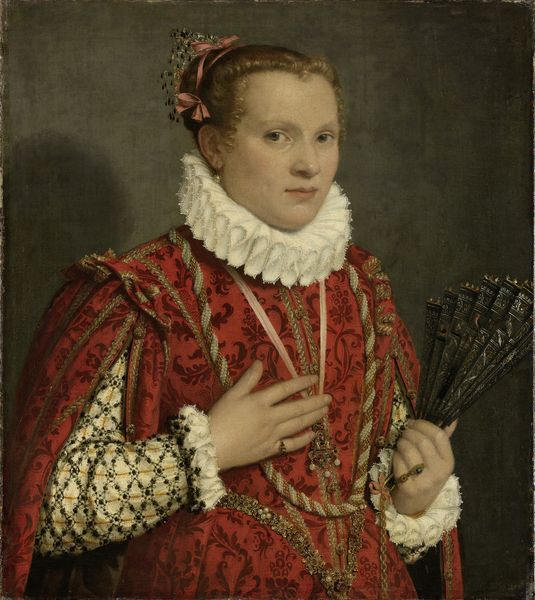
oil-paint
#
portrait
#
oil-paint
#
figuration
#
11_renaissance
#
oil painting
#
genre-painting
#
northern-renaissance
#
portrait art
Dimensions: overall (visible surface, greatest height): 43 × 30 cm (16 15/16 × 11 13/16 in.) framed: 50.01 × 37.62 × 5.08 cm (19 11/16 × 14 13/16 × 2 in.)
Copyright: National Gallery of Art: CC0 1.0
Bernhard Strigel painted this portrait of Margarethe Vöhlin, a woman of obvious means, in the early sixteenth century using oil on panel. Note the stylized pineapple motif woven into the red fabric behind her. The pineapple, originally native to South America, symbolized wealth, hospitality, and status, often used decoratively in elite European circles. Observe how this fruit found its way into European heraldry and decorative arts. The evolution of the pineapple from exotic curiosity to status symbol mirrors the trajectory of other motifs, like the serpent, which has shed its skin and reappeared in endless forms across cultures and eras, from the Ouroboros of ancient Egypt to the Caduceus. It whispers of transformation and hidden knowledge that captures our imagination. These symbols possess an emotional power, tapping into our collective memories and sparking a deep, subconscious connection. Such motifs create a dialogue across time, echoing through different epochs, reminding us of the continuous, cyclical nature of human culture.
Comments
No comments
Be the first to comment and join the conversation on the ultimate creative platform.
